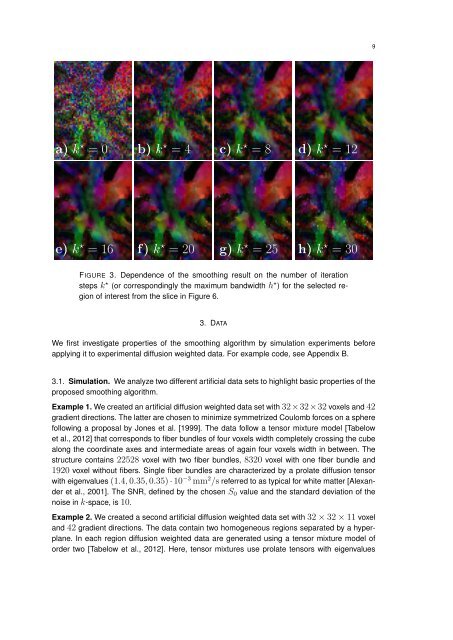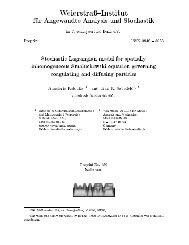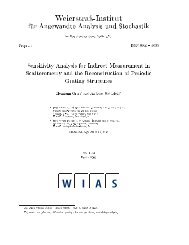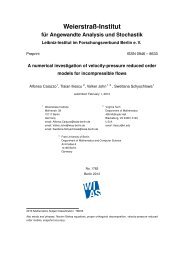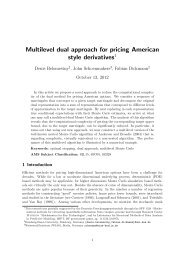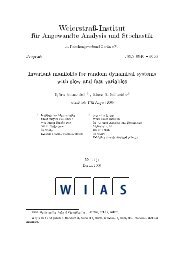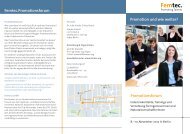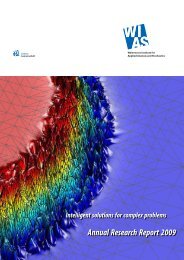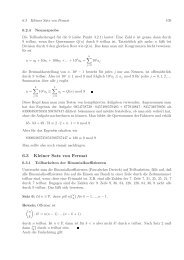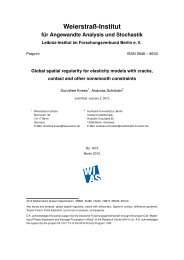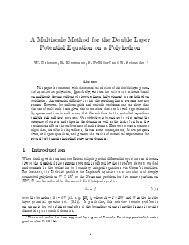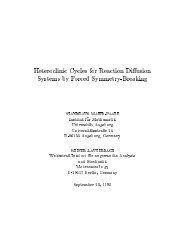PDF (5143 kByte) - WIAS
PDF (5143 kByte) - WIAS
PDF (5143 kByte) - WIAS
You also want an ePaper? Increase the reach of your titles
YUMPU automatically turns print PDFs into web optimized ePapers that Google loves.
a) k ⋆ = 0 b) k ⋆ = 4 c) k ⋆ = 8 d) k ⋆ = 12<br />
e) k ⋆ = 16 f) k ⋆ = 20 g) k ⋆ = 25 h) k ⋆ = 30<br />
FIGURE 3. Dependence of the smoothing result on the number of iteration<br />
steps k ⋆ (or correspondingly the maximum bandwidth h ⋆ ) for the selected region<br />
of interest from the slice in Figure 6.<br />
3. DATA<br />
We first investigate properties of the smoothing algorithm by simulation experiments before<br />
applying it to experimental diffusion weighted data. For example code, see Appendix B.<br />
3.1. Simulation. We analyze two different artificial data sets to highlight basic properties of the<br />
proposed smoothing algorithm.<br />
Example 1. We created an artificial diffusion weighted data set with 32×32×32 voxels and 42<br />
gradient directions. The latter are chosen to minimize symmetrized Coulomb forces on a sphere<br />
following a proposal by Jones et al. [1999]. The data follow a tensor mixture model [Tabelow<br />
et al., 2012] that corresponds to fiber bundles of four voxels width completely crossing the cube<br />
along the coordinate axes and intermediate areas of again four voxels width in between. The<br />
structure contains 22528 voxel with two fiber bundles, 8320 voxel with one fiber bundle and<br />
1920 voxel without fibers. Single fiber bundles are characterized by a prolate diffusion tensor<br />
with eigenvalues (1.4, 0.35, 0.35) · 10 −3 mm 2 /s referred to as typical for white matter [Alexander<br />
et al., 2001]. The SNR, defined by the chosen S0 value and the standard deviation of the<br />
noise in k-space, is 10.<br />
Example 2. We created a second artificial diffusion weighted data set with 32 × 32 × 11 voxel<br />
and 42 gradient directions. The data contain two homogeneous regions separated by a hyperplane.<br />
In each region diffusion weighted data are generated using a tensor mixture model of<br />
order two [Tabelow et al., 2012]. Here, tensor mixtures use prolate tensors with eigenvalues<br />
9


